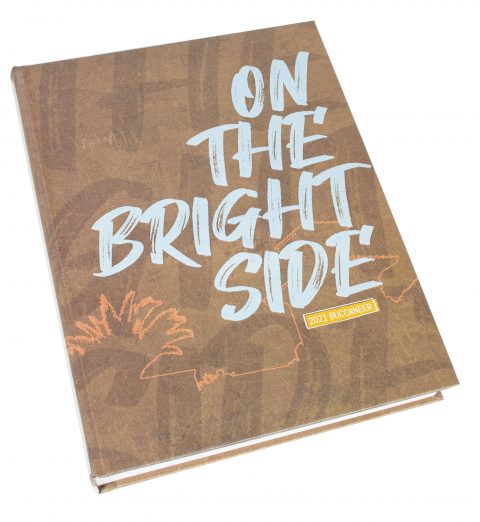We see yearbooks that come in all varieties. The yearbook cover has the biggest impact on your book because let’s face it, people always judge a yearbook by its cover. Follow this checklist to make sure your yearbook cover is one for the books.
Readable and Relatable
Make sure your cover is readable and relatable and avoid too many graphics. It’s easy to fill every corner of your cover with stuff that ultimately creates a distracting, cluttered mess. Make sure your fonts, photography and/or graphics enhance the theme instead of competing with it. The theme should speak for itself because it’s so relatable.
And don’t forget the spine! Spines should have your book name, year, school name, city, state and volume number and should be easy to read when glancing at the book on the shelf.
A WOW Factor
If you have money to invest, the cover is where you get the biggest bang for your buck. If you don’t, you can still create a great cover through the design, fonts and/or photography.
Consider techniques like embossing, hot foil, clear silk screen, a unique material or different lamination to give your cover that extra kick that will leave your readers saying “wow” or “how did they do that?” Some covers use interesting materials. A great cover will stand out on your bookshelf by bringing the perfect blend of theme, design, materials and punch.
Avoids Common Pitfalls
The most common student complaints about covers usually mean the cover is too busy or not relevant.
Avoid colors and fonts that might be polarizing. Guys especially may have negative reactions to certain colors and certain fonts. It’s always good to run the idea past a diverse group. Choose fonts that are legible but still feel connected to the theme. Using a plant artist or a pro designer can help you avoid a lot of problems, and your sales rep is always available for feedback.
Teases the Inside of the Yearbook
The yearbook cover should be a bridge to the inside of your book. Often, we forget to bring the same colors, fonts and techniques from the cover to the interior pages. You should reflect the same verbal and visual elements inside the book.
Good covers often continue a design element from the front to the spine and around to the back. Make sure your book name and year appear
on the front cover along with the theme phrase.
Don’t be afraid to share your cover with the school before arrival. Use the cover design to help market and sell your book. We want to see what we’re getting. If it’s a great cover, people will buy it!





